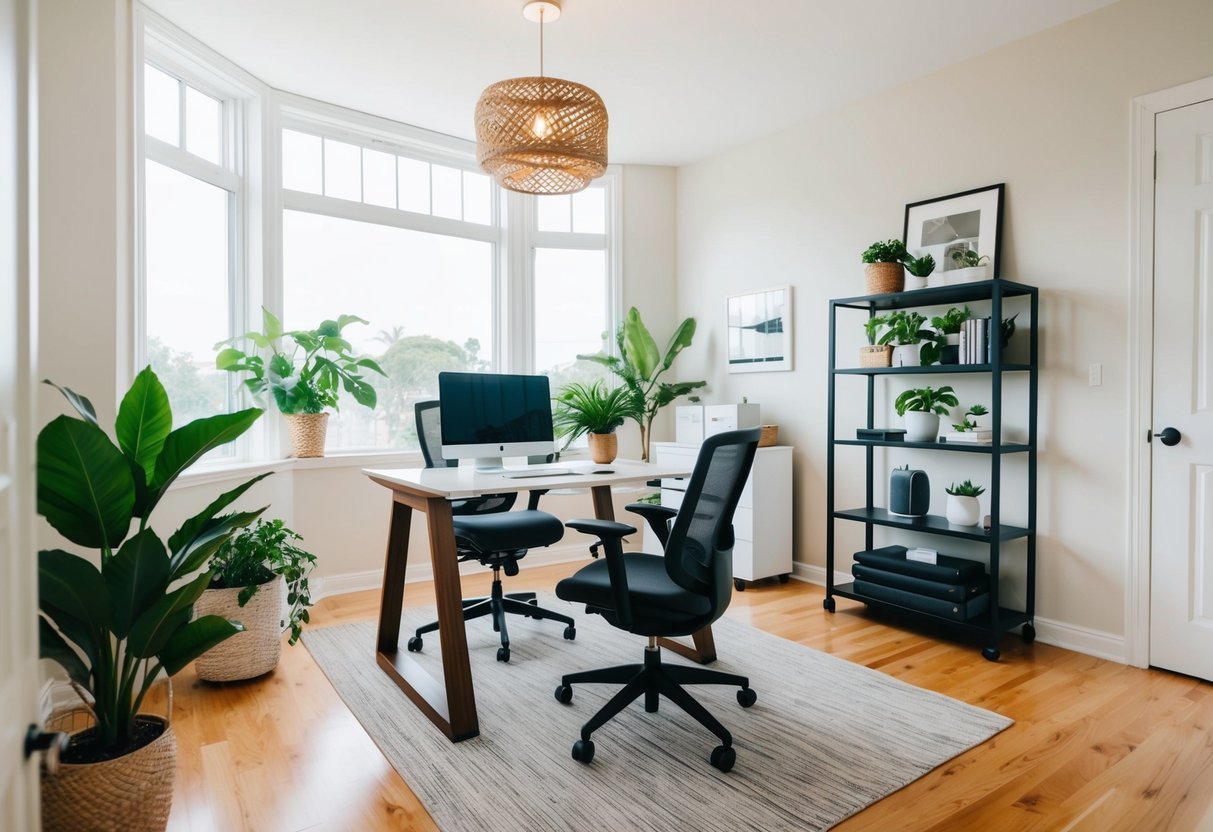Remote Work Wellness: DIY Tips for a Healthier Home Office
Technology and Equipment

Creating a productive and comfortable home office involves selecting the right technology and equipment. Reliable internet, good phone settings, and practical accessories like noise-cancelling headphones play key roles.
Essential Tech for a Home Office
A functional home office starts with a reliable computer and an ergonomic chair. The computer should meet the specific requirements of the work, whether it’s a powerful desktop for design tasks or a lightweight laptop for basic administrative duties. Monitors with adjustable stands enhance comfort, while a printer or scanner can be valuable for handling documents.
Wireless keyboards and mice contribute to a clutter-free desk. Investing in a quality webcam ensures clear video calls, essential for remote meetings. Proper lighting, such as a daylight desk lamp, reduces eye strain and improves visibility, enhancing work quality and comfort.
Noise-Cancelling Headphones: A Must-Have
Noise-cancelling headphones are indispensable for maintaining focus and reducing distractions. They are particularly beneficial in environments where noise pollution from household activities or neighborhood noise can be disruptive.
These headphones work by minimizing background noise, allowing for concentration during phone calls or video conferences. In addition to their primary function, many models offer excellent sound quality, enhancing music enjoyment during breaks. Selecting a comfortable pair with effective noise-cancellation features can significantly elevate the home office atmosphere.
Optimizing Internet and Phone Settings
Reliable and fast internet is critical for remote work efficiency. It’s worthwhile to update router firmware and secure strong Wi-Fi signals by positioning the router in a central location.
Ethernet connections offer more stability for important tasks like video conferencing. Configuring phone settings is equally important. Enabling features such as call forwarding, voicemail, and do not disturb modes can help manage distractions. These adjustments ensure seamless communication and bolster productivity while minimizing disruptions during work hours.
Health and Wellness
Remote work presents unique challenges and opportunities for improving employee health. Key areas to focus on include managing stress, maintaining physical fitness, and practicing mindfulness. Implementing effective strategies in these areas can lead to improved well-being and productivity for remote workers.
Stress Management Techniques
For remote workers, finding effective stress management techniques is crucial. Simple breathing exercises can significantly reduce stress levels. Encouraging regular breaks throughout the day also helps maintain focus and reduce burnout. Engaging in hobbies or activities outside of work hours can provide a necessary mental break. Creating a dedicated workspace can help draw lines between work and personal life, further reducing stress. Establishing a routine that balances work responsibilities with personal time contributes positively to stress reduction. Limiting digital distractions during work hours can also play a vital role in creating a focused and stress-free environment. Prioritizing these strategies can substantially enhance the mental health and well-being of remote employees.
Fitness Classes at Home
Incorporating fitness classes into a home routine is beneficial for maintaining physical health. Many online platforms offer a variety of classes, from yoga to high-intensity interval training, which can accommodate different fitness levels and preferences. Setting aside specific times for physical activity during the day can help establish a regular exercise routine. Using small spaces effectively for workouts, such as a living room or a spare room, can make it easier to stay active. Personalizing a fitness regime by selecting preferred classes and varying workouts can keep the routine engaging. Encouraging the integration of these practices ensures that remote workers remain active and engaged, contributing positively to both physical health and job performance.
Mindfulness for Remote Workers
Mindfulness practices can enhance focus and reduce anxiety for remote workers. Simple mindfulness exercises, like guided meditations or mindful breathing, can be incorporated into daily routines. Designating a specific time and quiet space for these practices helps create a habit. Short mindful moments during breaks, such as taking a few deep breaths, can refocus attention and relieve tension. Using apps focused on mindfulness may provide additional guidance and structure. Practicing mindfulness regularly can significantly improve the mental well-being of remote employees by promoting a sense of calm and maintaining a positive mindset throughout the workday.

